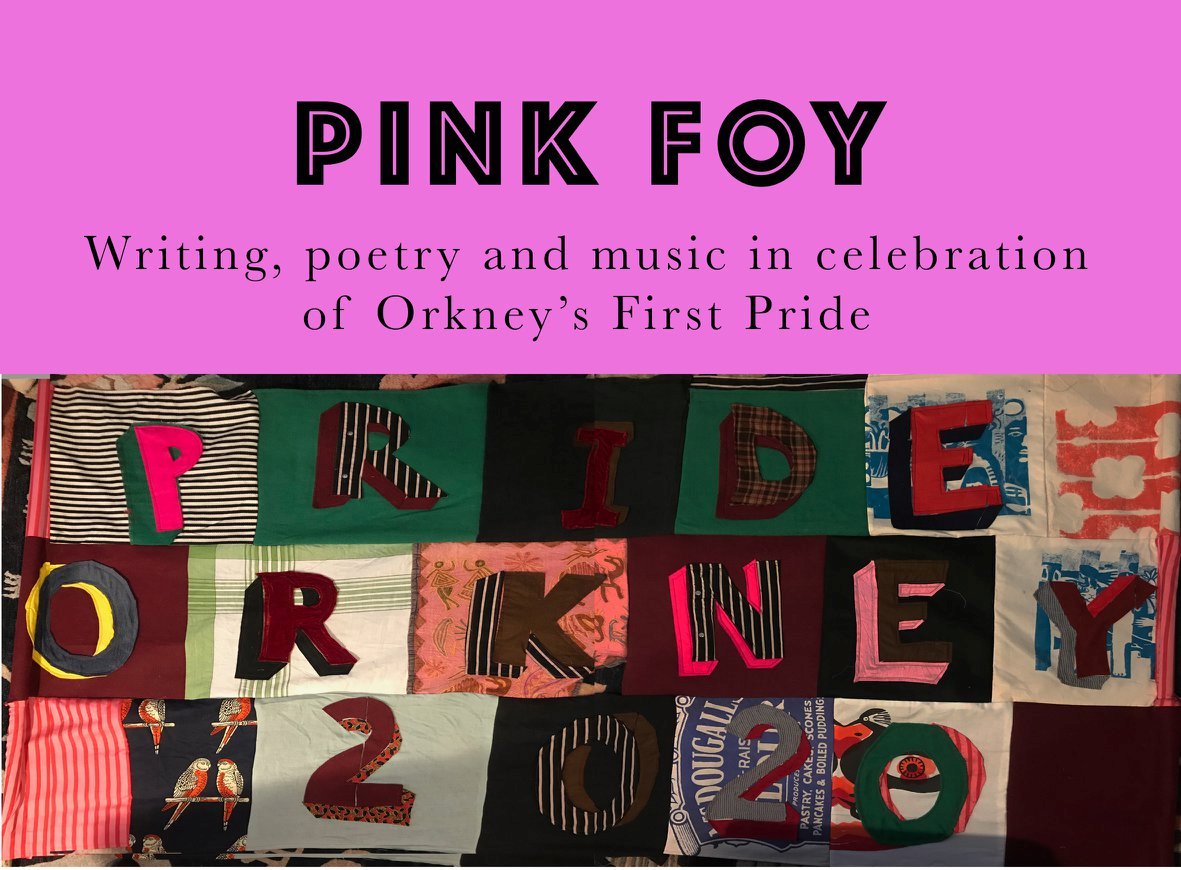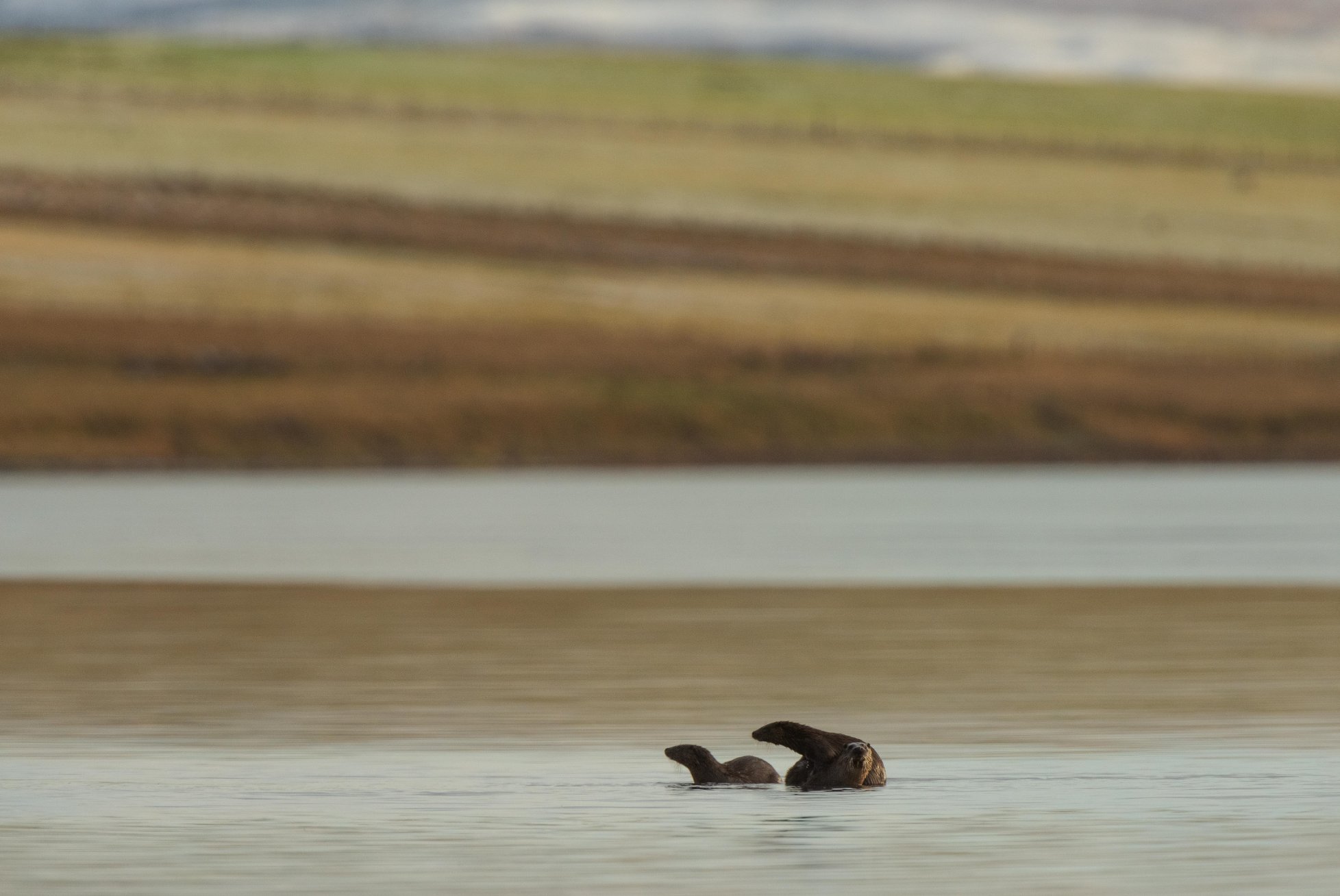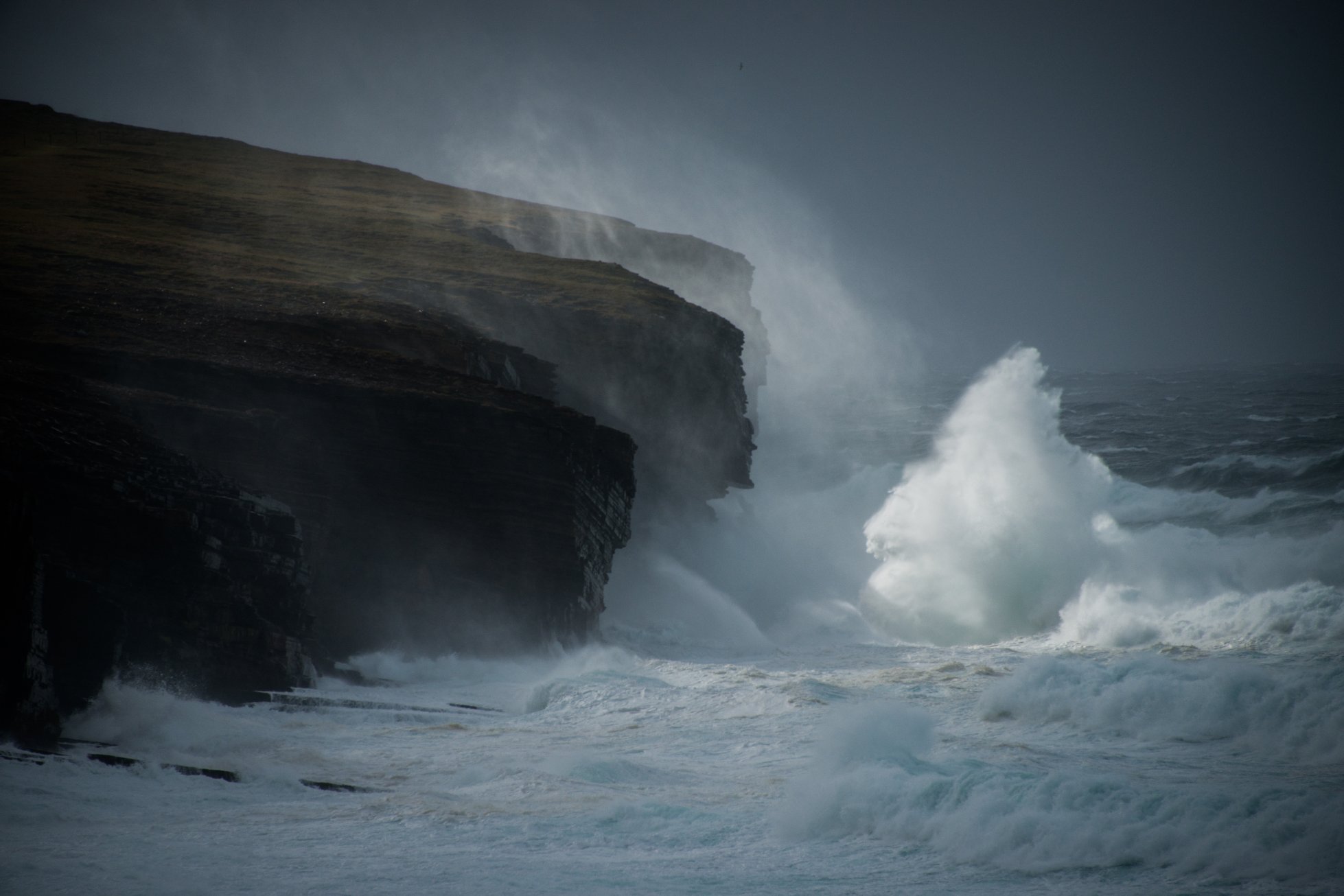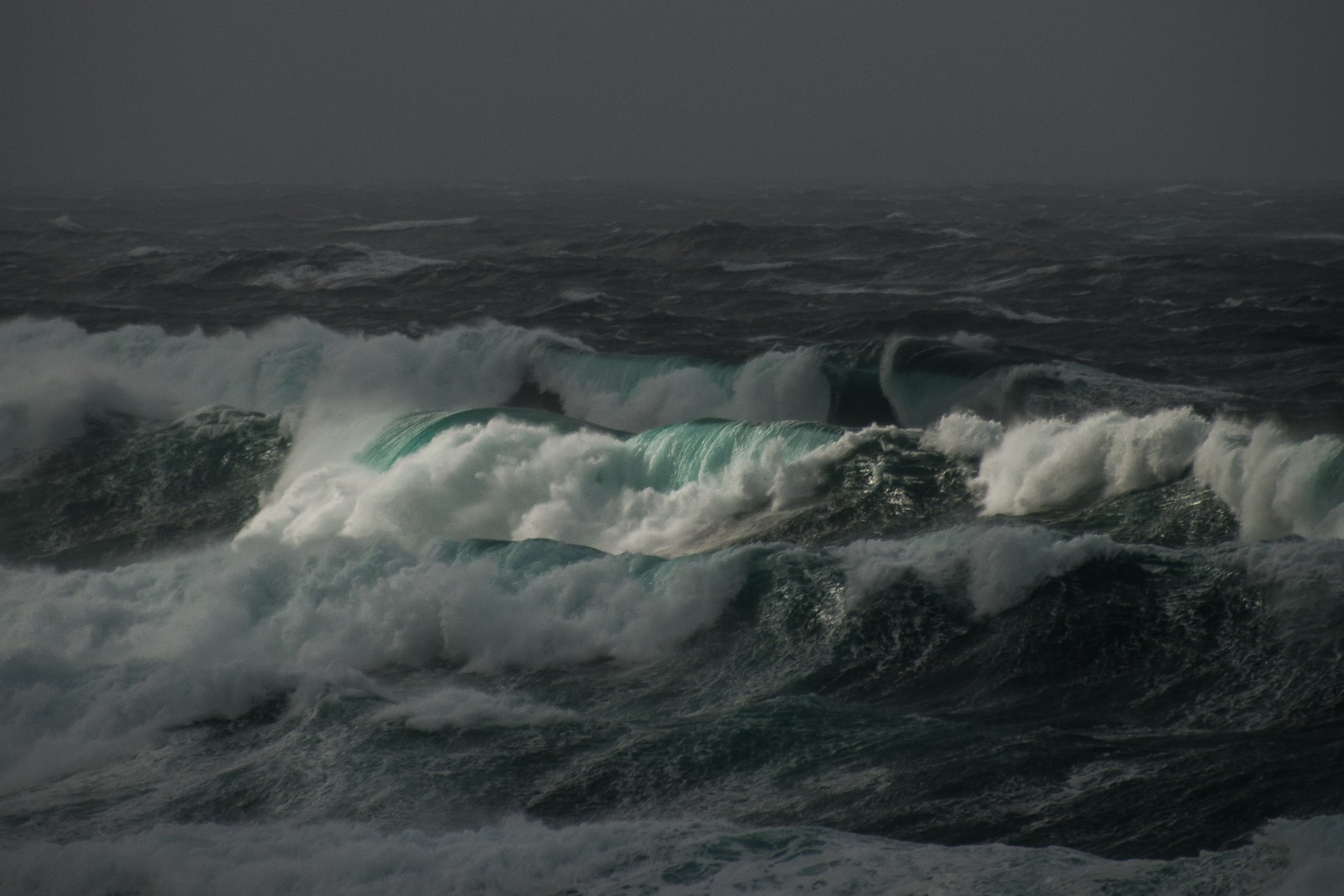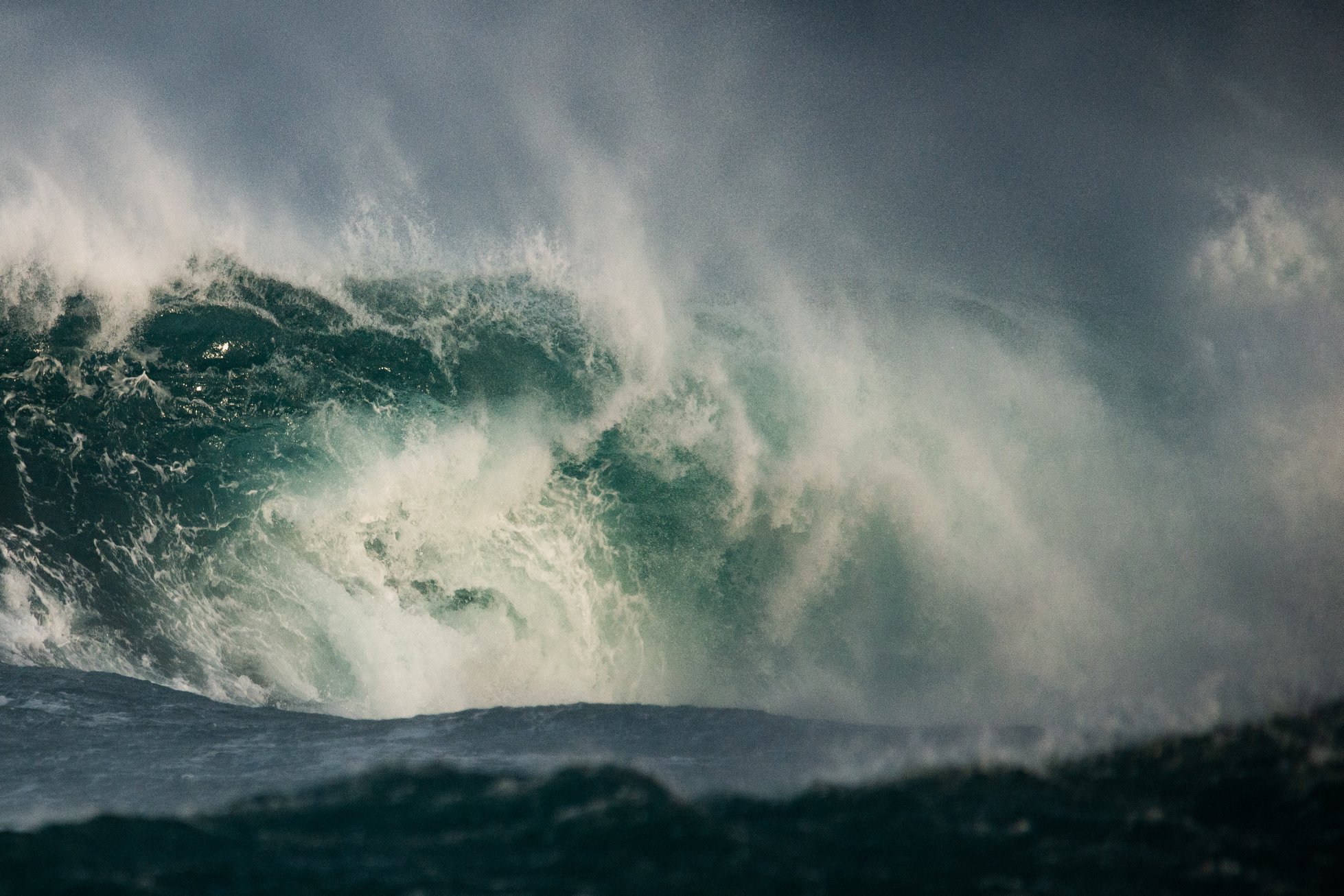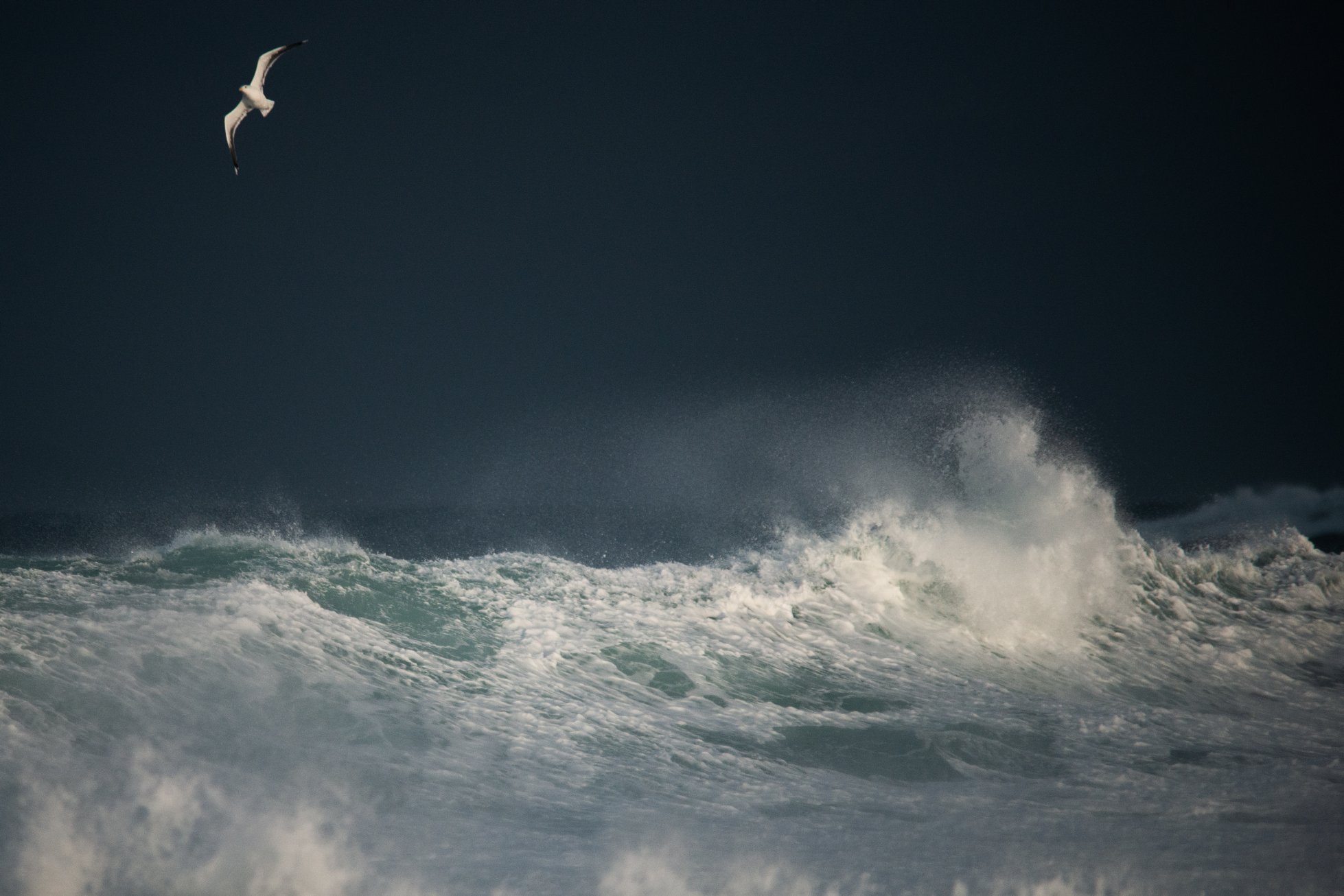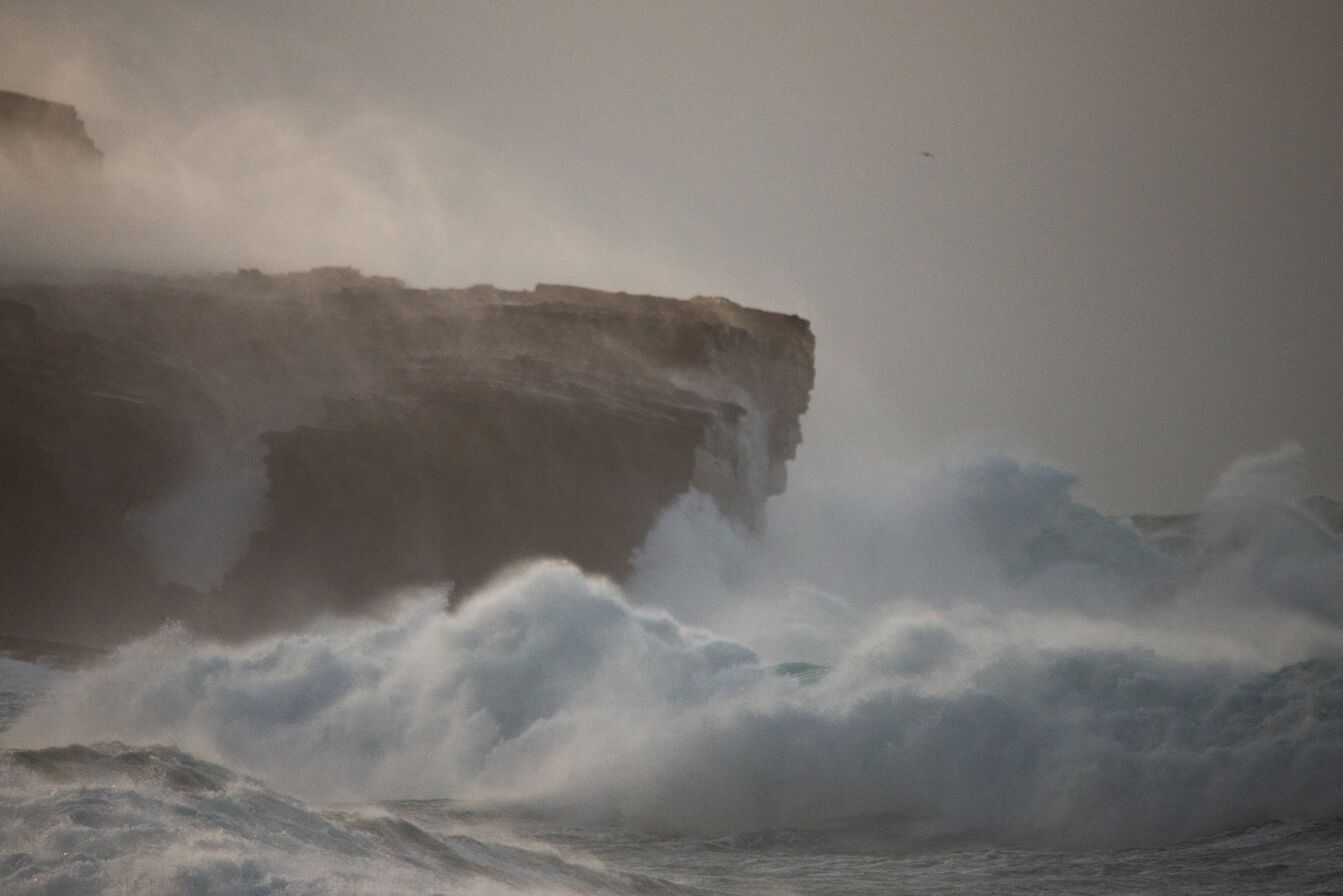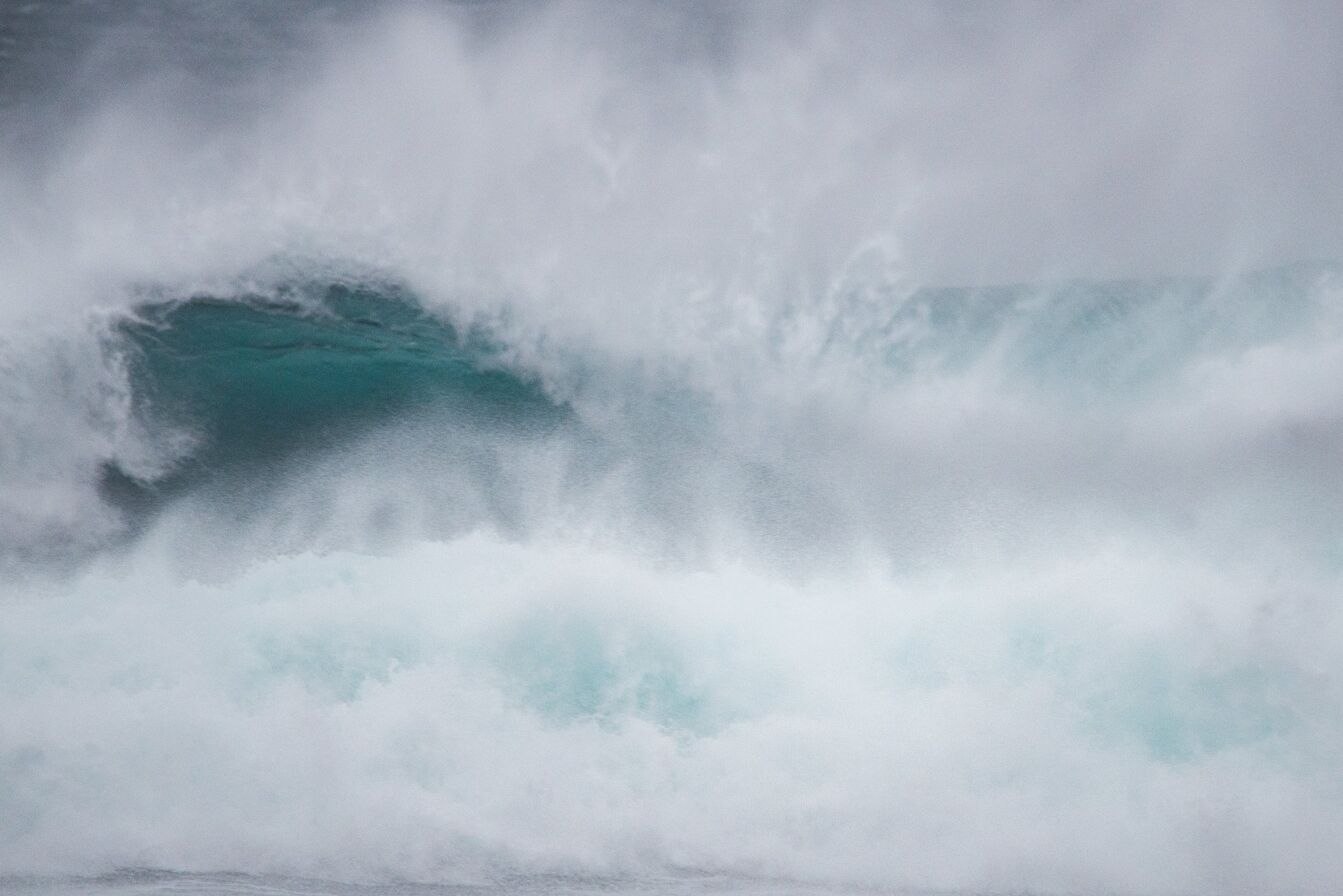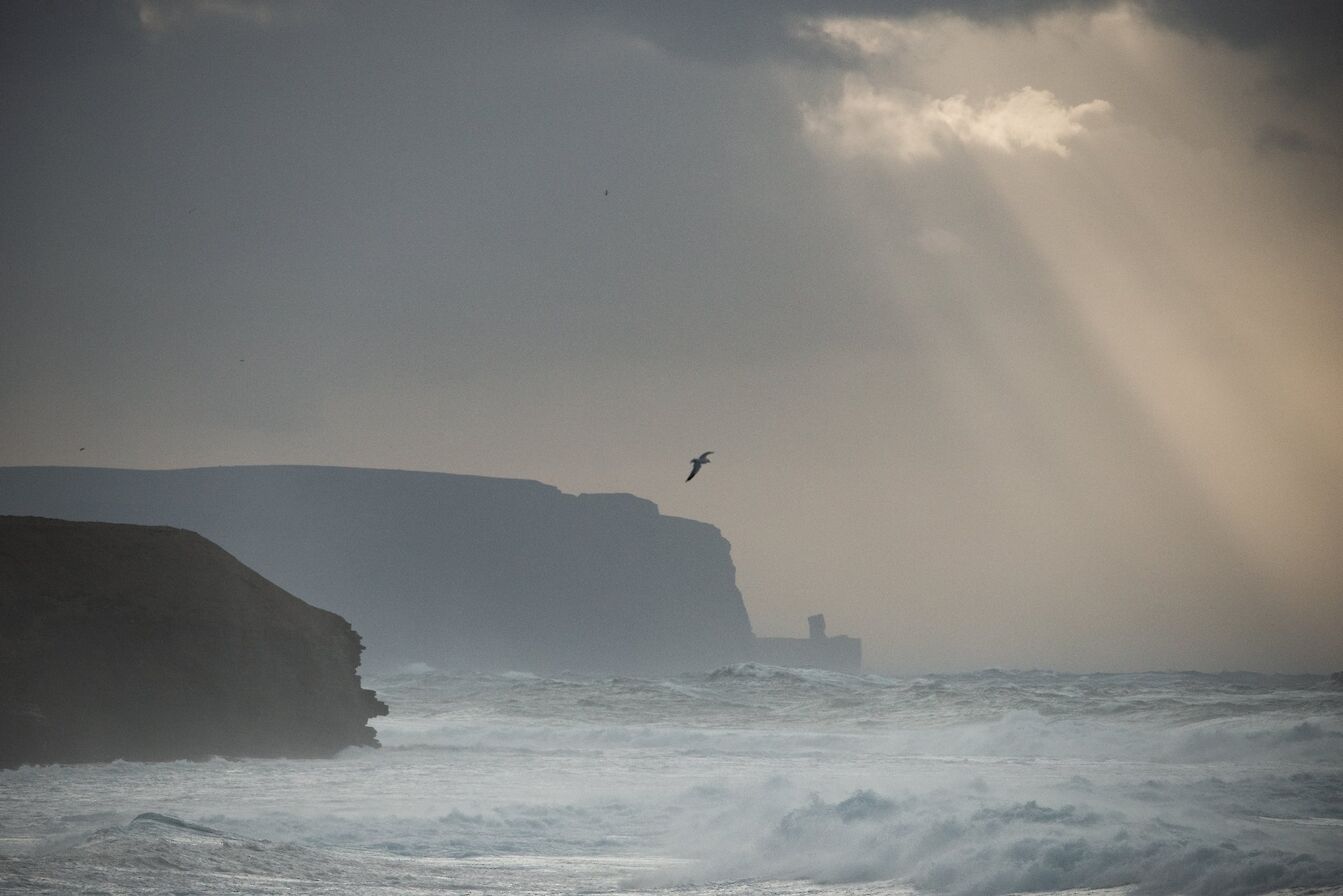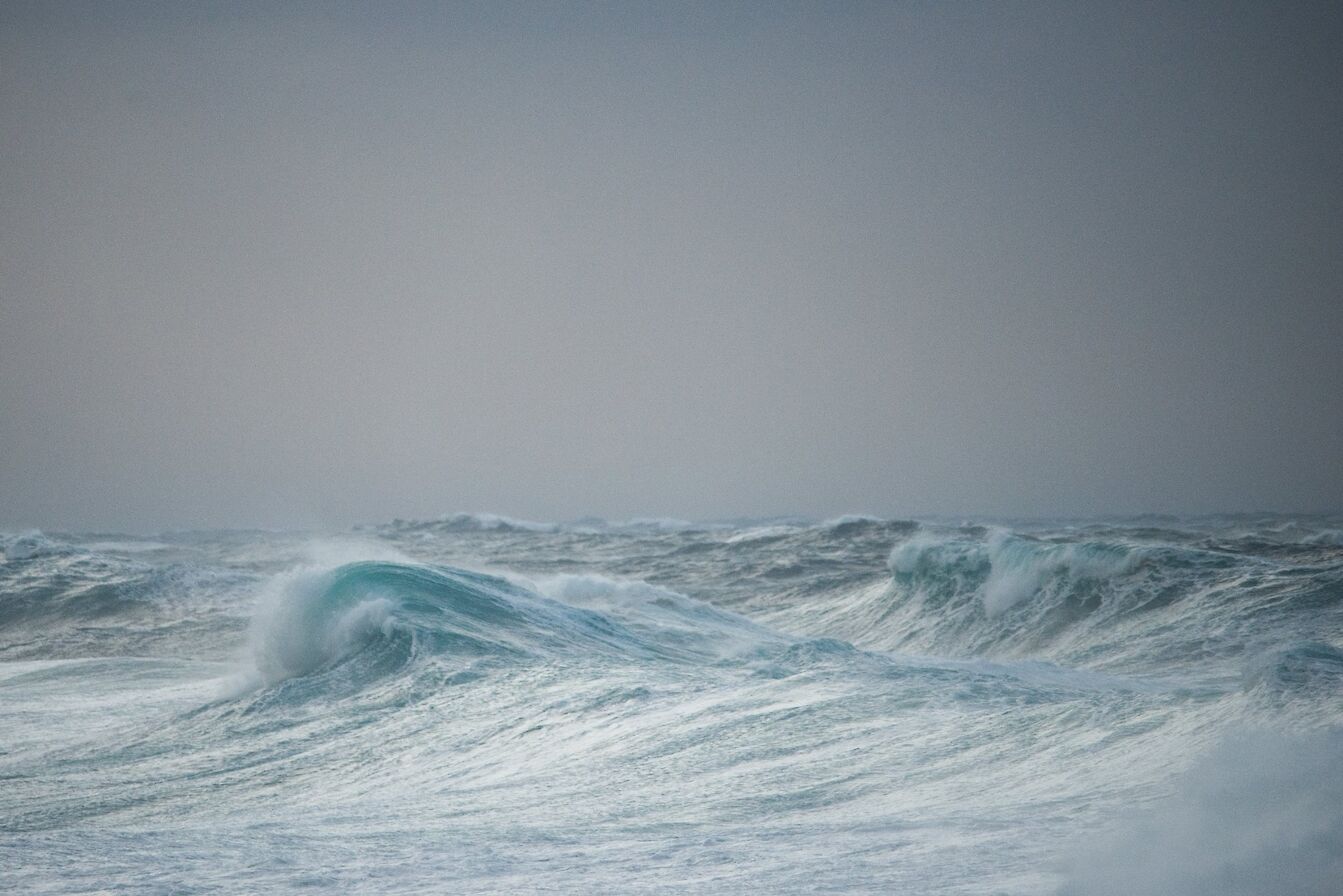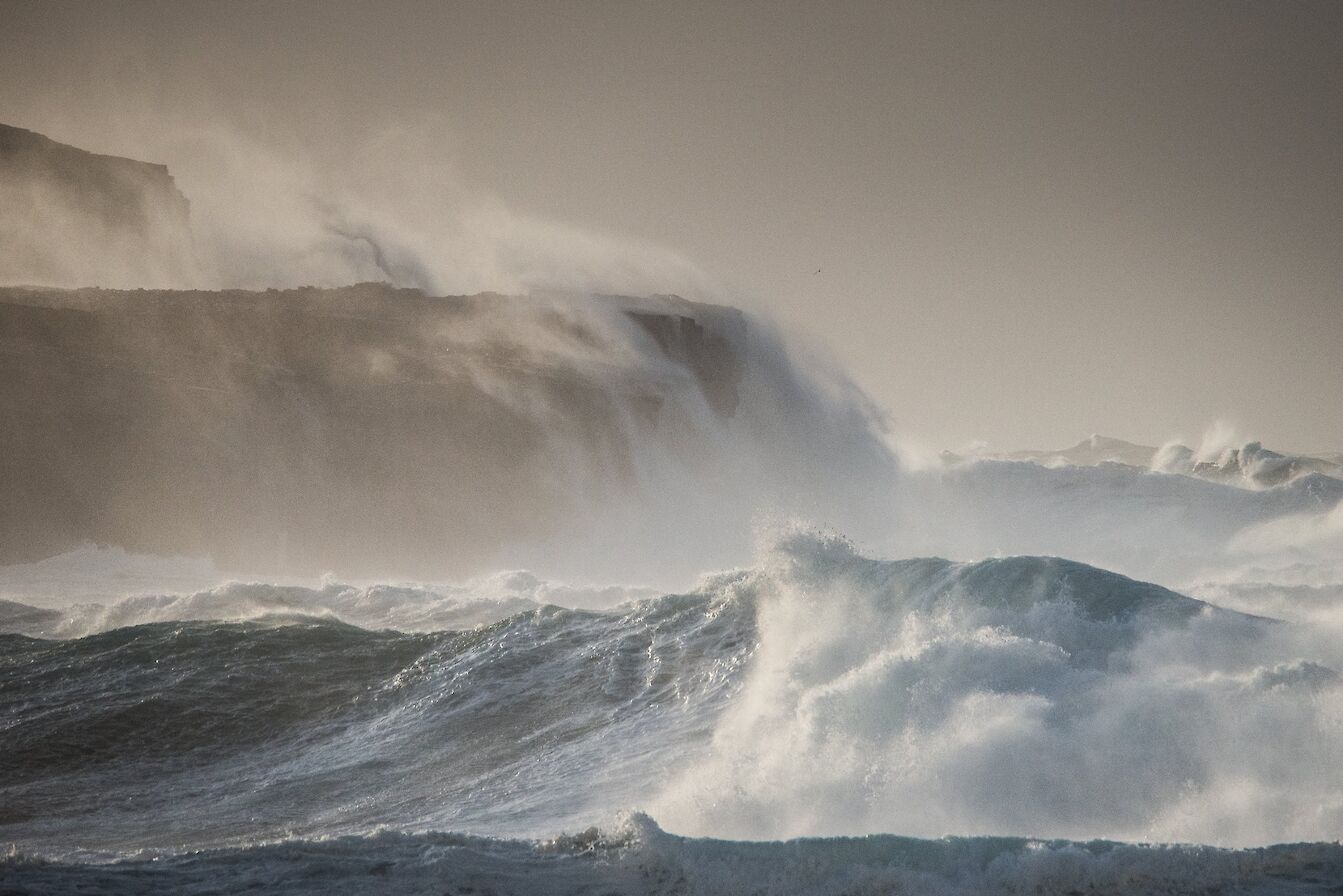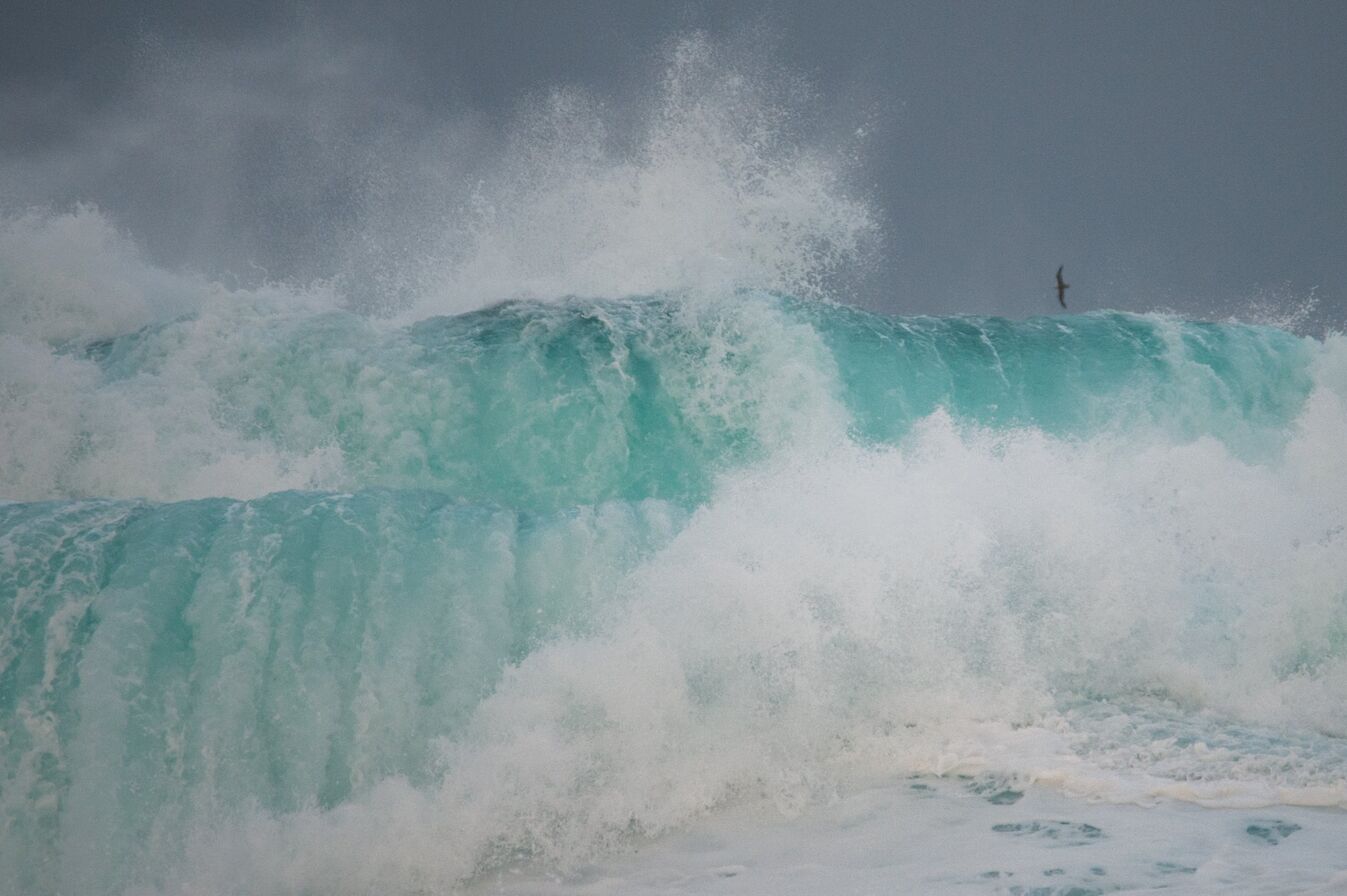Hello and welcome to the February newsletter from Orkney.com.
We’ve had wild weather and stormy seas over recent weeks, but the days are already starting to get that little bit lighter and longer.
We have plenty to keep you entertained this month, including the latest Orkney news and events, our wildlife focus and other features and photos about island life.
As always, we’d love to hear from you - stay in touch on social media by following the links at the top of the page.
February's headlines
Experience Orkney’s coasts & waters

Did you know that 2020 is officially Scotland’s Year of Coasts & Waters? And with nearly 600 miles of coastline and 16 inhabited islands, where better to spend it than Orkney? Our archipelago has been shaped by the sea over thousands of years and it’s the perfect time to celebrate everything the waters around the islands have to offer. We’ve picked nine different ways you can experience our coasts and waters in 2020 – let us know what you think!
Creative Trail launched for 2020

The new edition of Orkney’s Creative Trail brochure has been launched, showcasing the workshops, studios and shops of local makers across the islands. Twenty-four businesses are featured in the brochure this year, with jewellers, potters, painters, furniture-makers and more spread across four islands. New signage has been put in place at each site over the last twelve months to help folk find their way, with the brochure acting as the perfect guidebook to read en-route. Download your copy now.
Shortlist success for Orkney

Orkney has been nominated as Best Holiday Destination in the BBC Countryfile Magazine Awards 2020. It’s the second year in a row that the islands have been shortlisted in the category. Orkney is up against Anglesey, the Severn Valley, Essex and the Isle of Wight this time around. The winners will be decided by a public vote so visit the official website and show your support for Orkney! Voting closes on February 28th. Check out our blog to find out why we think Orkney made it onto the shortlist.
Medal haul for local gin producers

Two Orcadian gin producers are celebrating after claiming a share of five medals at the prestigious World Gin Awards. The Orkney Gin Company took Gold for its Rhubarb Old Tom in the Flavoured Gin section, as well as Silver for its Johnsmas Gin. Orkney Distilling scooped three medals, with its signature spirit, Kirkjuvagr, winning Silver in the London Dry Gin category of the event for Scotland. The company’s Aurora also took a Silver, with its newest gin, Beyla, winning a Bronze medal.
Join us on Instagram
 Follow Visit Orkney on Instagram to see some beautiful images of the islands. We publish shots from around Orkney every week and you can join in too. Tag your own images so we can share your Orkney journey. Use #VisitOrkney and #LoveOrkney to keep in touch.
Follow Visit Orkney on Instagram to see some beautiful images of the islands. We publish shots from around Orkney every week and you can join in too. Tag your own images so we can share your Orkney journey. Use #VisitOrkney and #LoveOrkney to keep in touch.
February in Orkney
Even if the February weather isn’t the most welcoming, you’ll still be able to find plenty of things to see and do across Orkney this month.
The Orkney Arts Society starts February off in style, hosting a special ‘Pink Foy’ in support of Orkney’s first Pride event, due to be held in the summer. The Foy will feature writing, poetry and music in celebration of the Orkney Pride plans. Join in at the Royal Hotel in Stromness from 7pm on the 6th.
The following night, the Society has a piano recital by Masayuki Tayama in the Stromness Town Hall, which gets underway at 7.30pm.
The Pickaquoy Centre hosts a very special guest on the 6th, with cyclist and globetrotter Mark Beaumont taking to the stage to look back at his attempt to cycle around the world in 80 days. The event will see Mark showing films and photography from his various expeditions and world record attempts. Head along and be inspired – tickets are available from the Centre reception or via 01856 87 9900, and doors open at 7pm.
The Orkney Theatre stage will be busy this month too, with the return of the Kirkwall Amateur Operatic Society. The group will be performing ‘Sister Act’ between the 11th and 15th, and it’s sure to be a sensational show. Tickets are available from The Orcadian Bookshop in Kirkwall.
You can get the chance to see one of Scotland’s finest musical ensembles at the Sound Archive in Kirkwall this month. Celtic fusion band Shooglenifty will be performing at the venue on the 22nd – tickets are available from Grooves on Laing Street in the town or online.
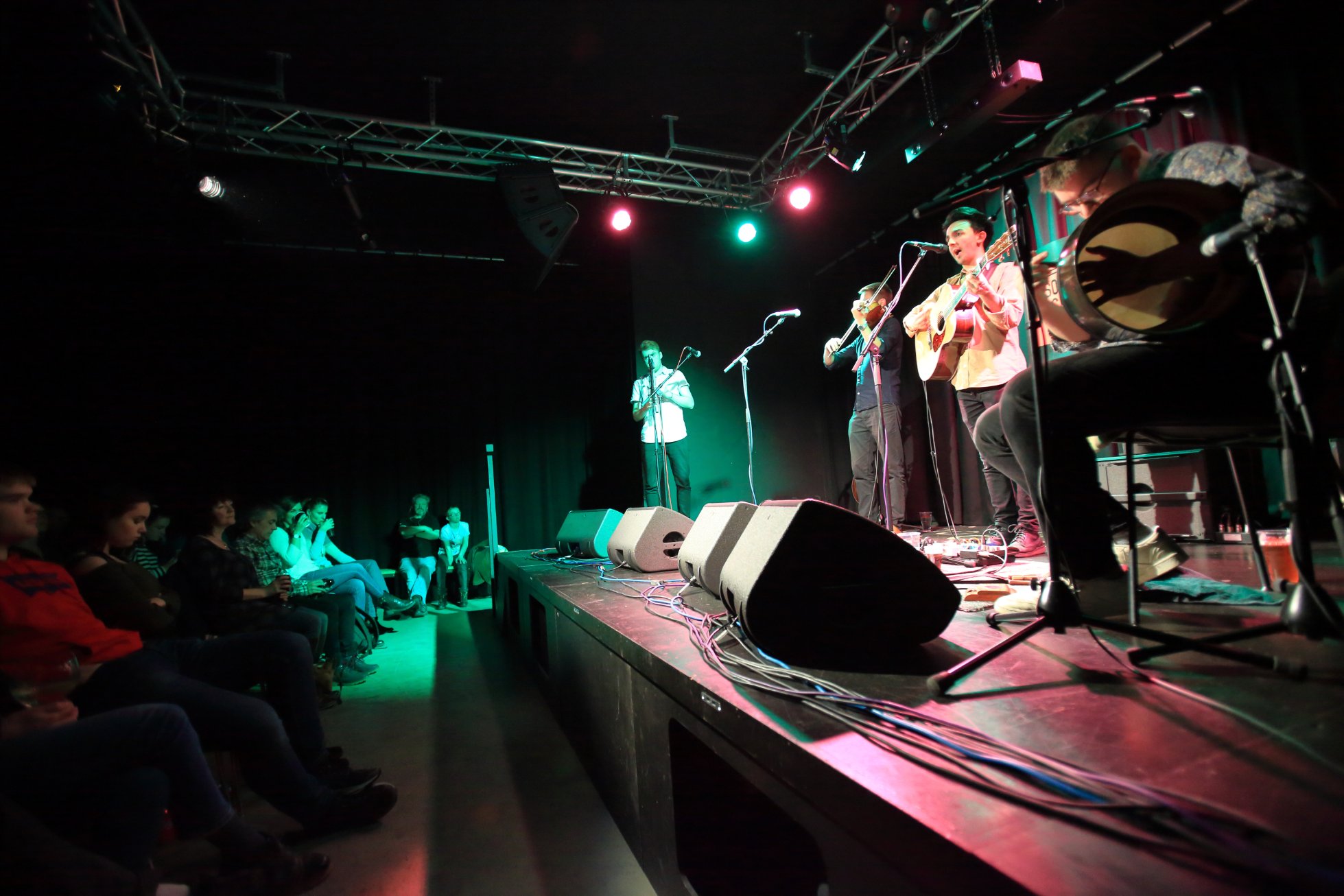
There’s plenty to see in Orkney’s museums this month. The Stromness Museum’s winter exhibition – ‘Carry on Collecting - New Acquisitions’ – is open from the 4th of February until the 27th of March, featuring more than 30 objects donated to the museum since 2017. Meanwhile, the Orkney Museum has ‘Baltic Bowls and Riga Cups’ on show until the 16th.
If you’re keen to brave the winter weather, you can take advantage of excellent guided tours of some of our finest Neolithic sites. Visit the Standing Stones of Stenness with our Historic Environment Scotland Rangers every Wednesday at 10am, and the Ring of Brodgar every Thursday at 1pm.

The Pickaquoy Centre cinema is showing its usual mix of films this month, including '1917', 'The Irishman', 'JoJo Rabbit' and 'Dolittle'. View the full schedule online. The West Side Cinema in Stromness is showing 'We the Animals' on the 8th and 'Pain & Glory' on the 22nd in Stromness Town Hall. Doors open at 7.15pm for a 7.45pm start.
That’s just a taste of events in Orkney during February. There’s always lots more happening around the islands – keep up to date with our events page, pick up a copy of local newspaper ‘The Orcadian’ every Thursday or tune into BBC Radio Orkney every weekday morning from 0730 on 93.7FM or on Facebook.
Wild Orkney
Join local wildlife cameraman and photographer, Raymond Besant, to discover his Wild Orkney highlights in February.
With their sheer size, covering an area of more than 19 square kilometres, the Lochs of Harray and Stenness dominate the landscape of the West Mainland. They briefly touch at one point, under the small bridge near the Standing Stones of Stenness, yet they have very different characters.
Harray to me is seemingly more tranquil and easier to access, but the Stenness Loch has that little something extra, perhaps more untamed, I think in part due to its connection to the sea. It is after all technically a sea loch, outflowing into the Bay of Ireland from the Brig O’Waithe twice a day, and making this the largest brackish lagoon in the UK.
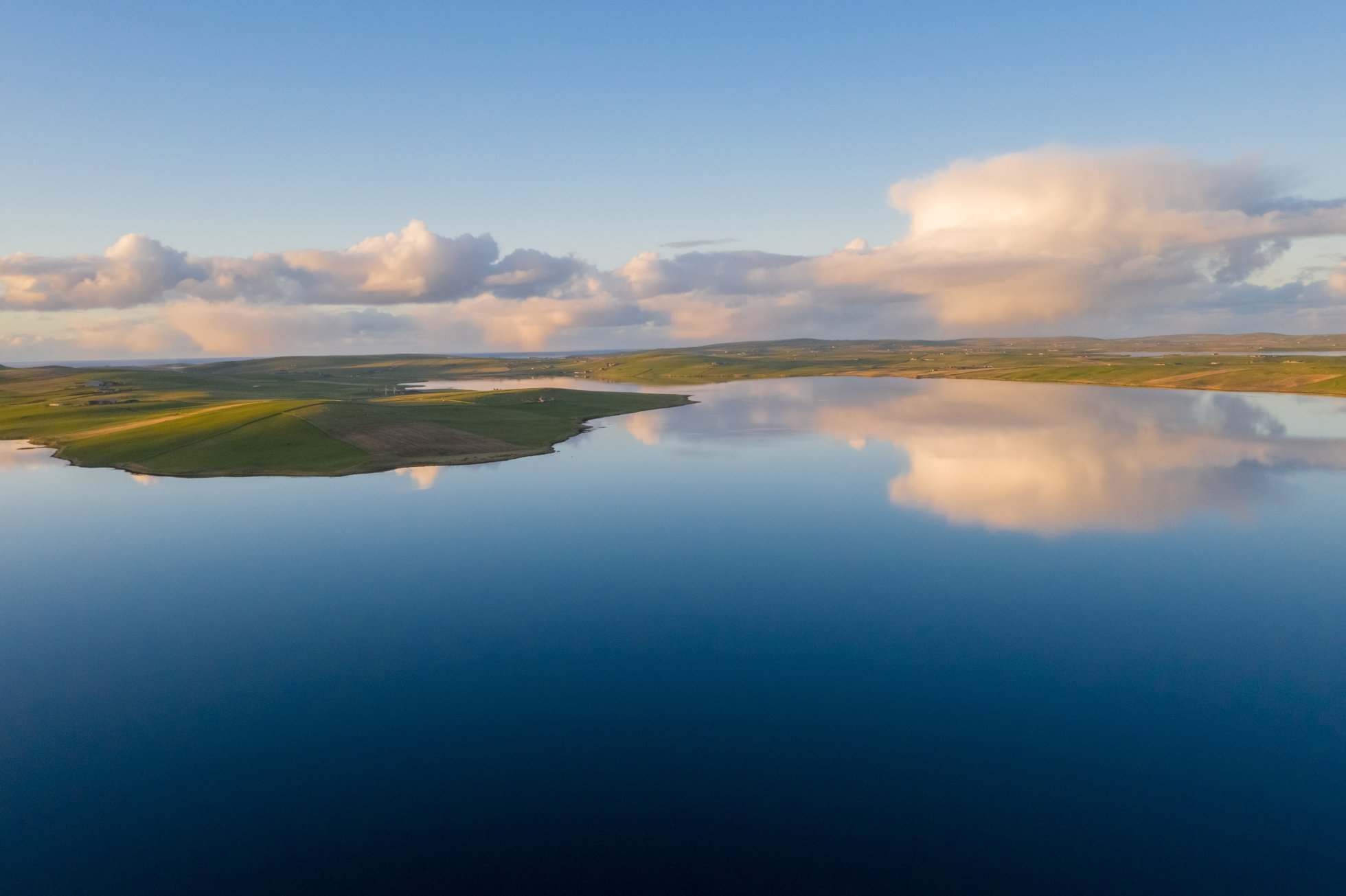
The vast majority of the Stenness Loch is surround by agricultural land and it can feel a little overwhelming knowing where to start exploring its shores, as not all of it is immediately accessible. I have several favourite spots and like to start at the Brig O’Waithe where you can park up on the south side of the bridge and watch the water flow as the tide rises.
There have been lots of daytime otter sightings on the loch recently, with several families seen. It seems to be an important habitat for them as we see a welcome increase in these charismatic mammals. Otters absolutely love eels as they’re full of fat and nutrients, and the deep water of the loch has a healthy population for them to feed on. When I say ‘deep water’, it’s all relative - the average depth is just over three metres and the deepest point is just over five metres, but this still makes it the deepest loch in Orkney.
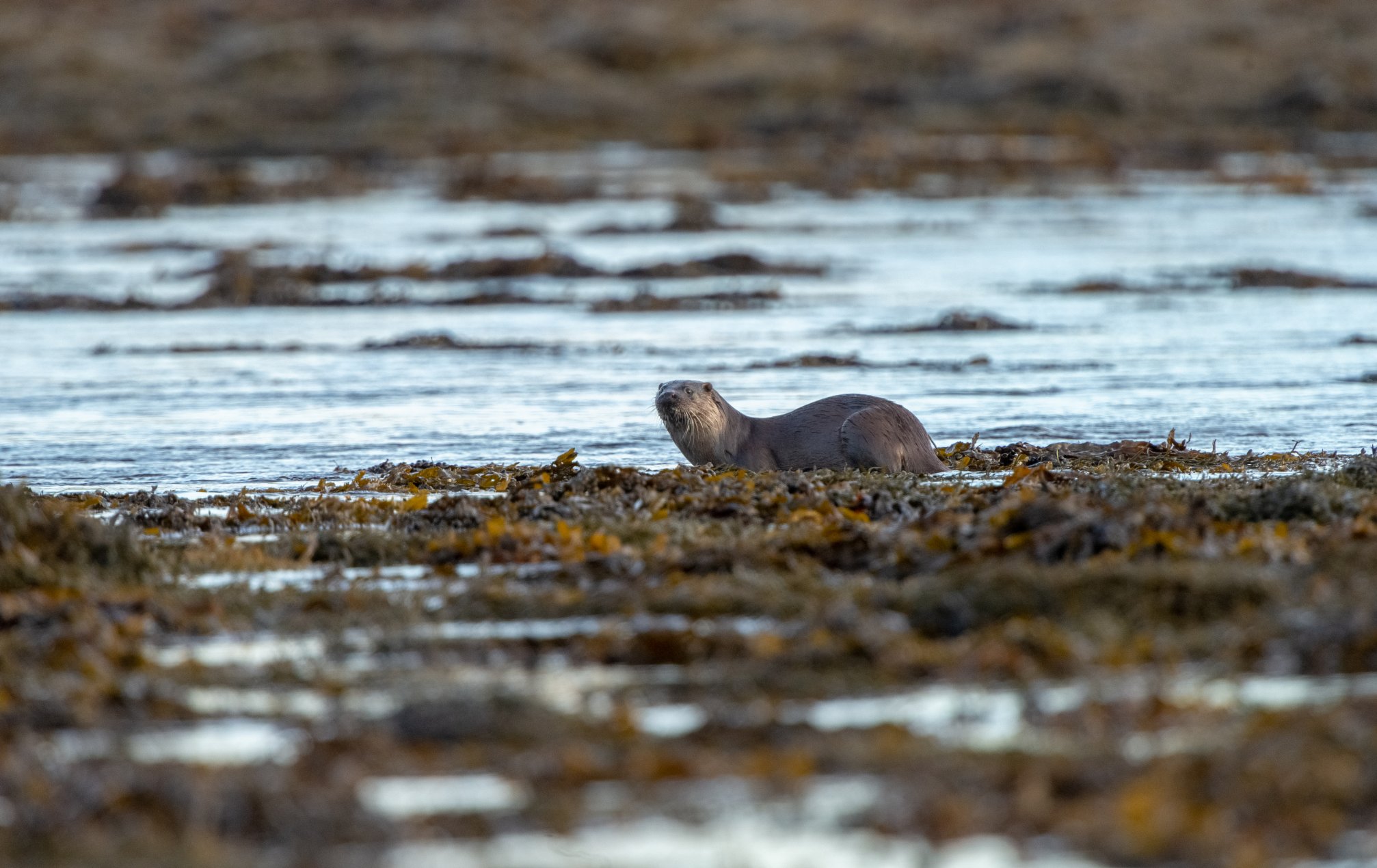
Orkney’s lochs are rightly famous for their trout fishing and you’ll find brown trout and sea trout here. Of course, the otters make use of this resource, as well as the flatfish found in the brackish water. I generally just watch from the car, scanning with binoculars to make sure I haven’t missed anything obvious. Keep an eye on the small grassy island just off the shore - if it’s not covered by hauled-out harbour seals then it’s often a good place to see resting otters. They love the channel heading towards the bridge, and when the tide is running, they will fish in here before the tide completely floods.
Unfortunately, the odd otter succumbs to the traffic here, but by and large they use the space underneath the bridge as their passageway between loch and sea. Look out here too for little grebe, red breasted merganser and curlew. If it’s quiet on the ‘sea-side’ then cross the road and tuck yourself into the vegetation to get yourself off the skyline. Good numbers of oystercatchers can be seen here roosting on the small islands and wigeon dabble amongst the wrack for food. Grey herons can be seen hunched against the cold too, occasionally stabbing into the loch at passing fish.
Point your binoculars to the small headland to the right and keep looking. Otters like headlands, I think it must be to do with marker points in their territory, and they’re often covered in spraint (poo!) if used regularly - the calling card with a multitude of functions, not least letting other otters know you are in the vicinity.
My other favourite place to search for wildlife takes in a circular walk starting near the Ness of Brodgar and heading NW towards the RSPB Brodgar reserve. then back east through the Ring of Brodgar. It’s easy walking, but one frustrating aspect of the nature of the vegetation here is that you often flush out snipe before you get a proper chance to look at them - their cryptic camouflage certainly works! This area is great for wildfowl - teal in particular like to hug the shore whilst the smaller birds like twite can often be seen in good numbers. If you’re lucky, a hen harrier or short eared owl will put in an appearance.
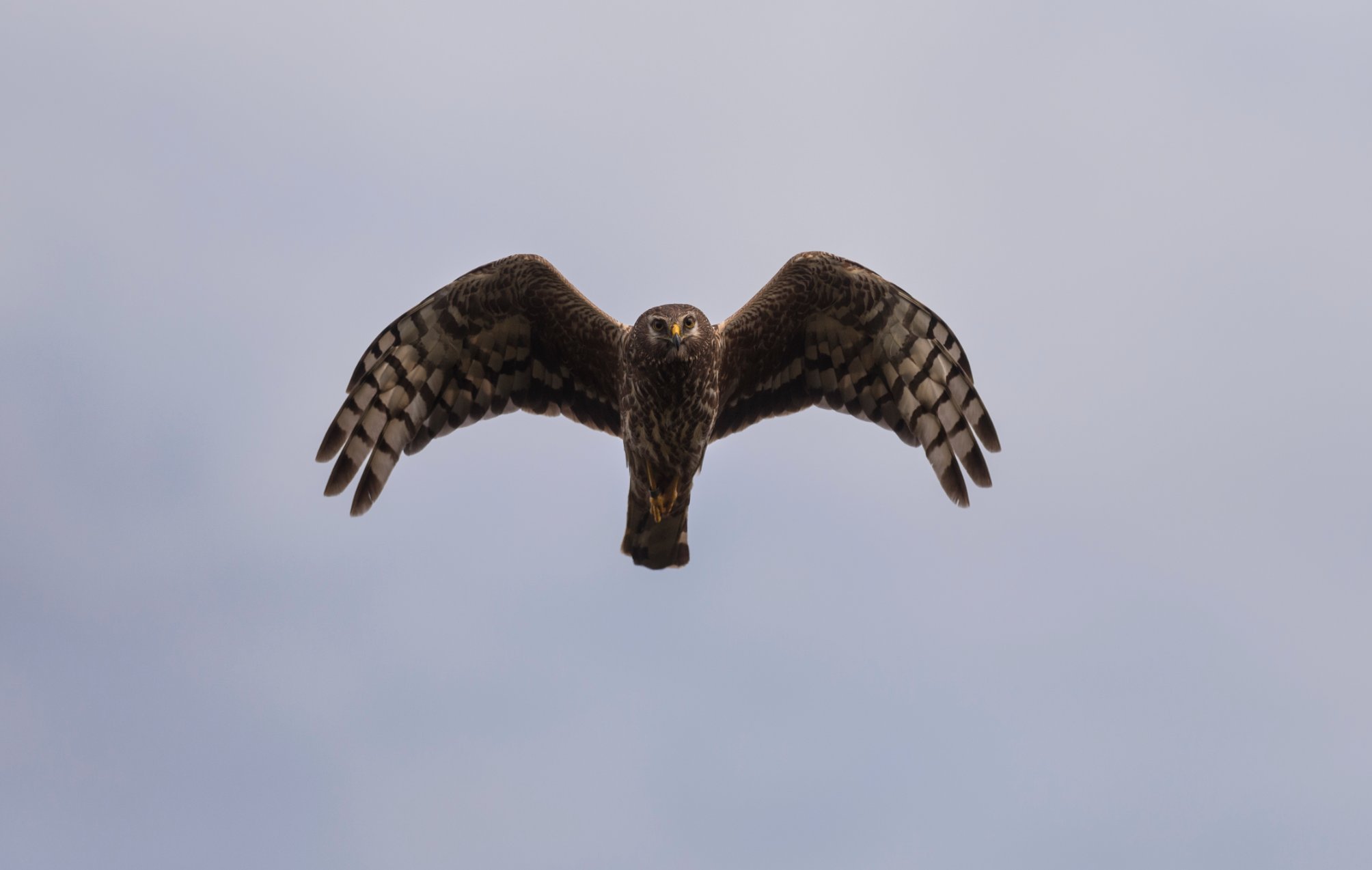
Just before taking the right turn up to the Ring of Brodgar, sit quietly in what must be one of the otter hotspots in Orkney. The dog otter that frequents this patch seems particularly unfazed by people and, sitting quietly and respectfully, you can have a special encounter here. Rising over the brae and through the stones you will see the Loch of Harray stretch out before you. Raise your binoculars once again and scan the loch for red throated divers, Slavonian grebes and a plethora of duck species, including pochard, scaup and tufted duck.
The exposed open nature of the loch means that westerly and northerly winds can whip up white horses, but it is one of my favourite places to be when we get those rare calm days. It’s a little bit of a cliché, but it really does turn into a mirror, with the surrounding farmland reflected in the water. It’s then that it’s worth parking up at the Standing Stones of Stenness car park to admire a bird that most of us take for granted, the mute swan. I should mention that otters are regularly found here too, so scan for them first!
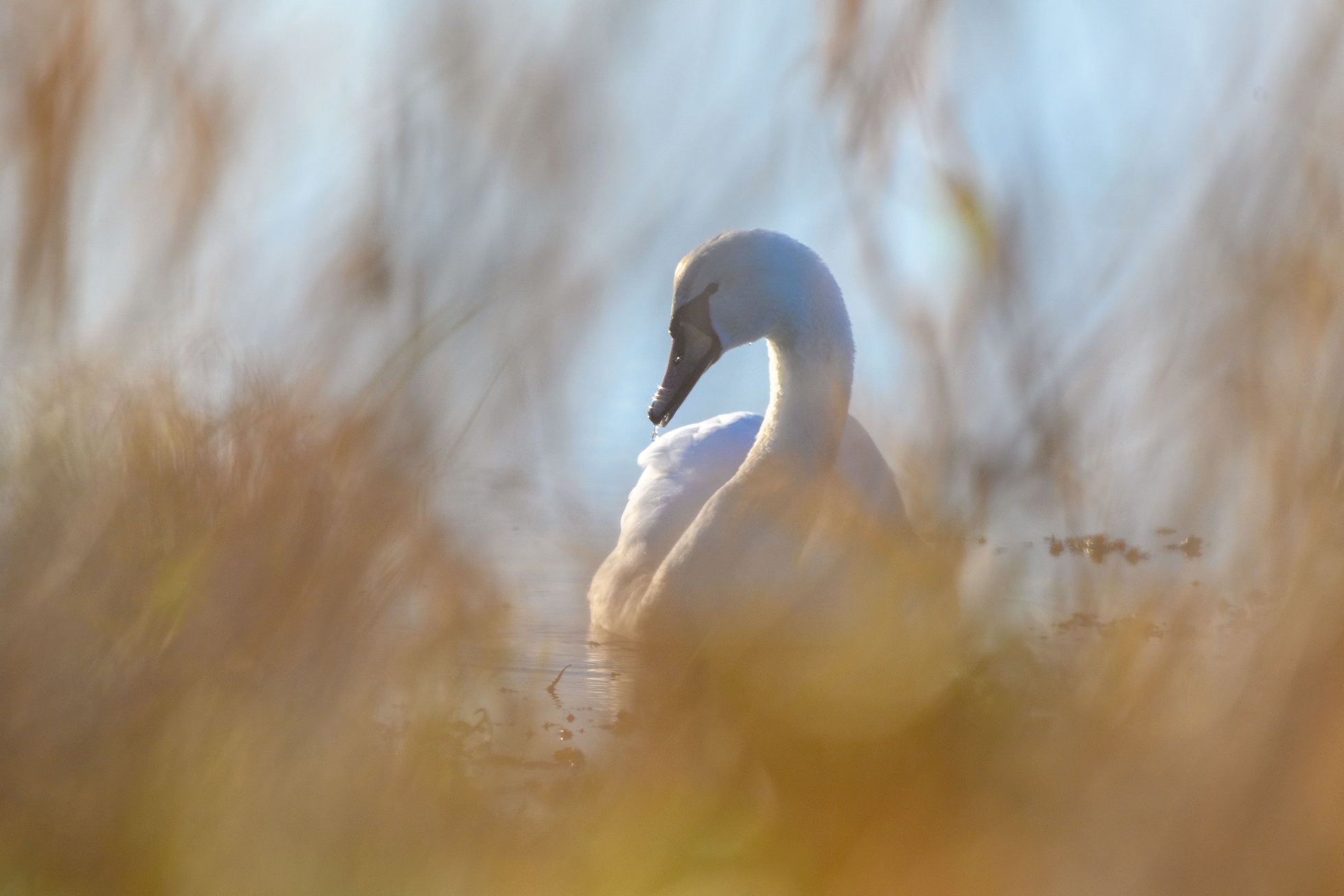
The swans here are really used to people and so it’s a great opportunity to study them properly as they laconically move between the weeds.
Find out more about Raymond’s work via his official website. You can also find him on Facebook, Twitter and Instagram.
His new book, 'Naturally Orkney Volume 2' is out now, focusing on Orkney's coastline and all the sights and species that can be found there. You can order your copy online.
Focus on photography
Winter in Orkney can be a spectacular place, and this month’s featured photographer, Margaret Soraya, certainly knows how to capture the wild weather.
I began photographing the landscape whilst growing up in Manchester, but I had a real and very strong desire to escape and live by the sea. After studying photography at university, I relocated to the Scottish Highlands and became fascinated by wild and remote places. I became a professional photographer 15 years by shooting weddings - something that I still do. My weddings tend to be elopements on Scottish islands beach now though!
I am moving towards becoming a full-time landscape photographer and I recently exhibited in the south of England with a body of work from the islands, based around coastal and wave images. The exhibition was entitled ‘Quiet’ and was an exploration of introversion and solitude in photography.
My true passion has always been landscape photography - it is where I am in my element, where I am happiest and most at peace. I have a desire to share this and inspire others who are also searching and have a wish to find peace within the landscape. I now run photography retreats to the Scottish islands too.
I love the idea of how mindful photography us. When you shoot in places where nature is all around, without the distractions of the modern world and the demands of connectivity and fast paced life, photography becomes even more powerful. The raw, real beauty of Orkney is a perfect place to go to reset and recharge by spending time outdoors. Creativity is a wonderful tool for discovering yourself and your true passions.
When I first visited Orkney four years ago, it was at New Year and we have been returning each year ever since at this time. I simply adore the quietness of the islands, along with the energy of the winter weather and light. For me, winter is the best time to see Orkney. I have a love of waves and adore seeing the winter swells roll in and the waves crashing against the rocks. When you add in the volume of bird life that can be seen swopping around these waves and cliffs, there is little more that I can ask for - apart from maybe some shafts of sunlight breaking through stormy skies. This New Year, I experienced all of that on most days.
My favourite place is Birsay because of its exposed nature, the waves are often wild and impressive and the expanse of seas are breath-taking. It can certainly be challenging to create images in these conditions, but never impossible. Orkney is the most special place and it is definitely a photographer’s dream.
See more of Margaret’s work on Instagram. She also runs photography retreats, with two planned for Orkney in 2020 – find out more via her official website.
Explore hidden Orkney
Every month we feature a hidden Orkney attraction that is well worth seeking out. For February, we’re heading to the wild west coast of the mainland.
Brochs can be found across Orkney, with our finest examples open to visitors at Gurness and Midhowe. Both these sites offer a real glimpse into life in Iron Age Orkney, with sprawling structures to stroll through, complete with well-preserved broch buildings.
However, the Broch of Borwick is a completely different prospect. This crumbling structure is perched precariously on an eroding headland, looking out over the Atlantic Ocean from the west coast of the Orkney mainland.
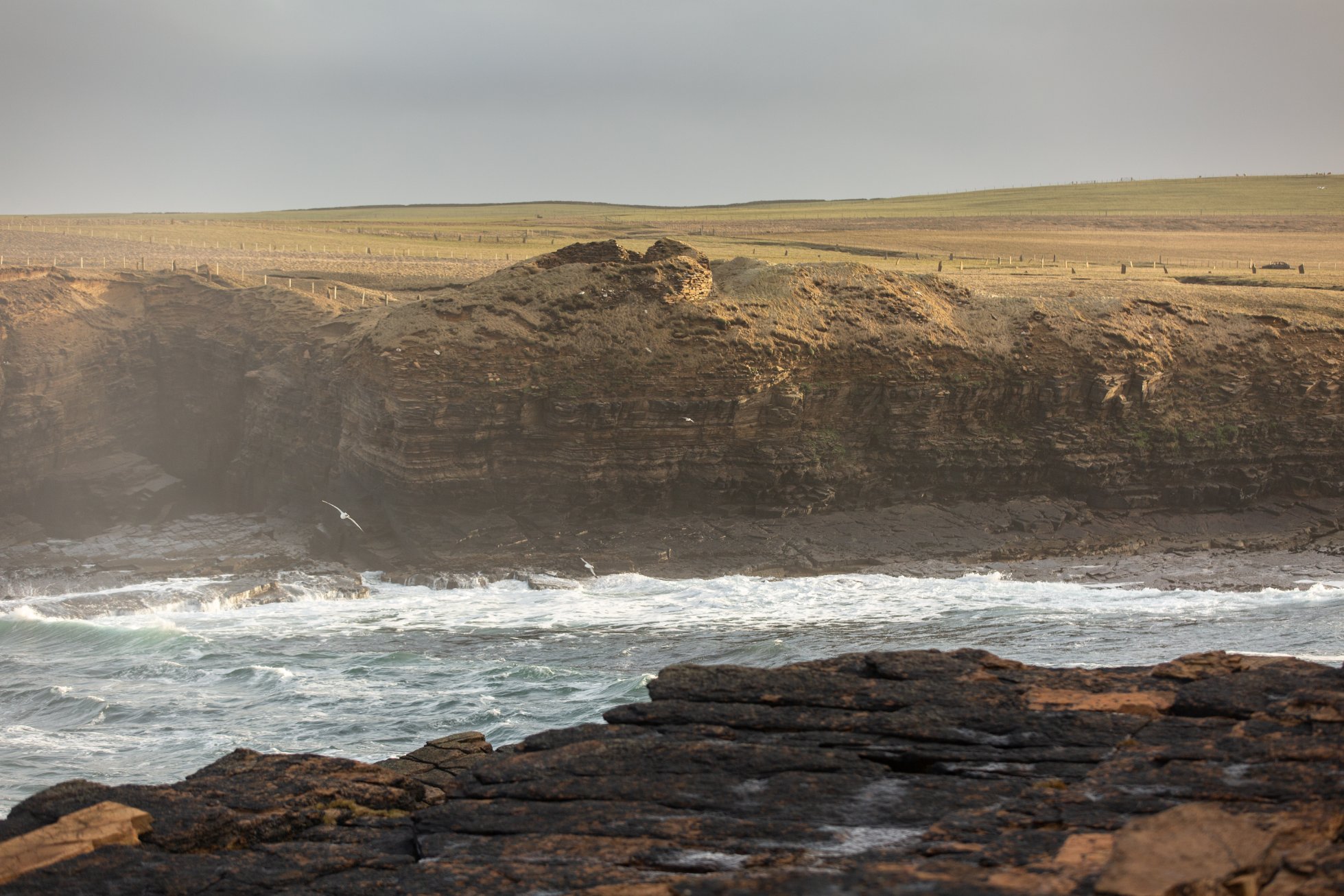
It’s almost camouflaged by the surrounding rock and vegetation. You can find it by heading north from the Yesnaby car park and circling around a large geo. Look carefully across the bay and you should see the broch’s outline, and it all becomes clearer when you climb the track towards it.
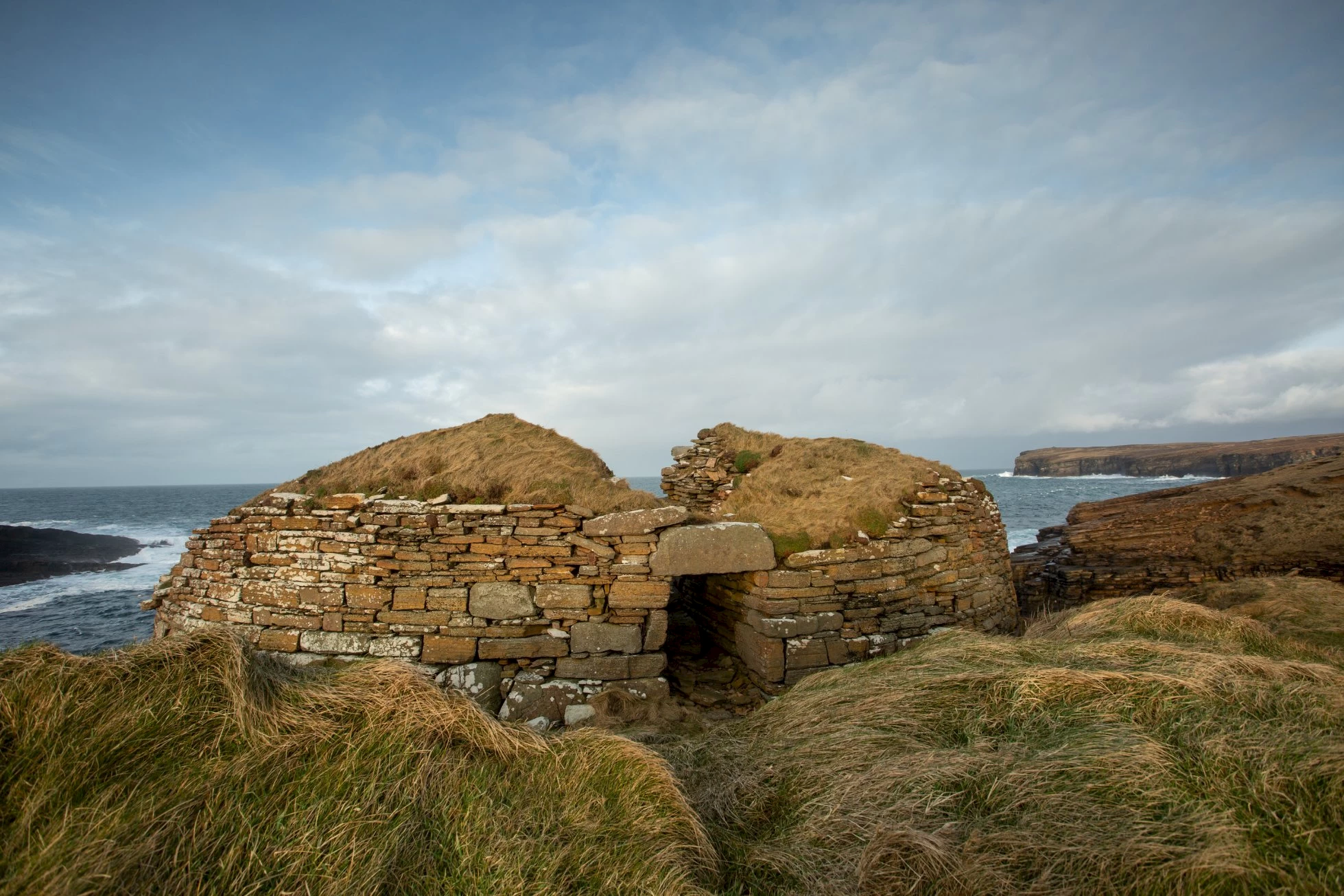
It’s thought the Broch of Borwick was built around 500BC, and in its heyday it would have dominated this craggy stretch of coastline. It could have stretched around five metres into the sky, with a diameter of around seven metres. This is smaller than the buildings at Gurness and Midhowe, suggesting it could have been a base for a less-powerful individual, or perhaps a territorial or border marker.
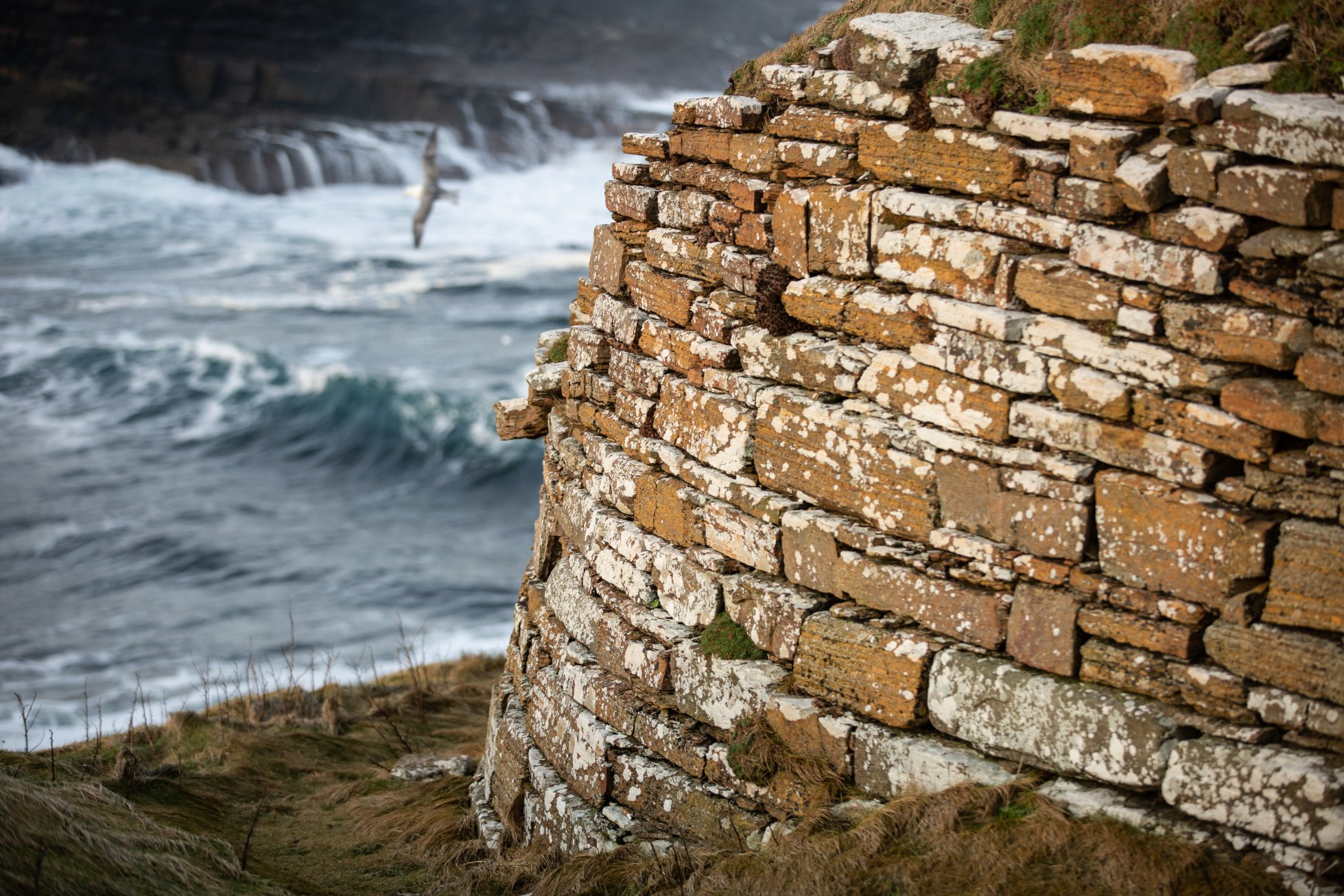
The broch was excavated in 1881 by William Watt, who provided local residents with quarried stone from the site, reducing the grand size of structure to its present-day state. It sits around three metres high, with its back half sloping down to the edge of the cliff in dramatic fashion.
Despite its relative lack of stature, the Broch of Borwick is still a fascinating place to visit, if only for the chance to see archaeology at the edge. And after you’ve finished exploring the remains of this ancient structure, you’ll be able enjoy some of the most dramatic coastline in Orkney too.
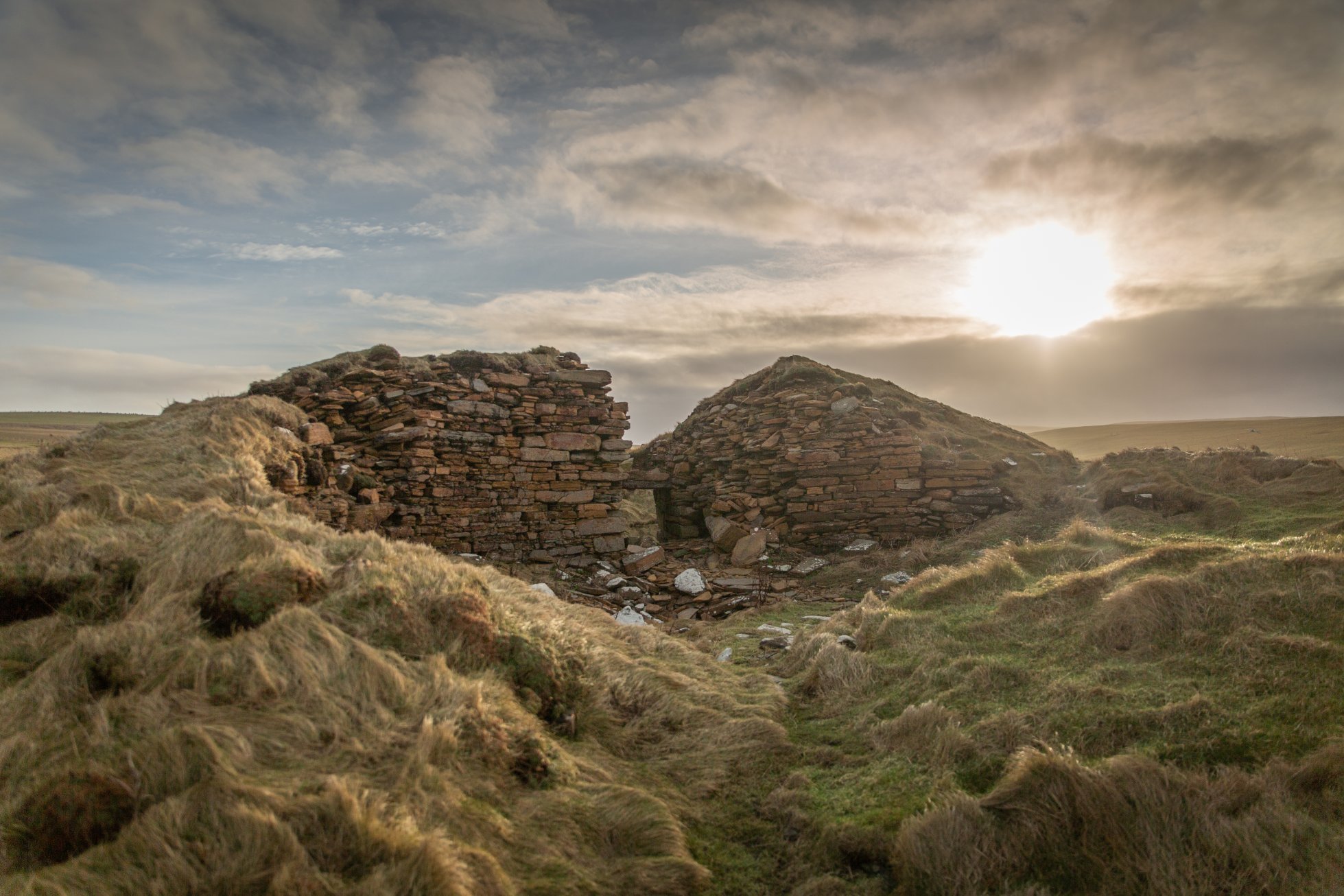
Read more about the Broch of Borwick in our special history blog from Orcadian writer and archaeology student, Sigurd Towrie.
See more of our hidden Orkney attractions via our interactive map.
And finally...
Thank you for taking the time to read our latest newsletter – hopefully there has been something to inspire you to make a visit to Orkney, for a short trip or a more permanent stay.
We’re always keen to hear from you too - share your news, views and comments on the newsletter, Orkney.com and your Orkney experiences with us on Facebook, Twitter, Instagram or E-mail.
In the meantime, it's cheerio from Orkney, for now.
The Digital Orkney project has been part financed by the Scottish Government and the European Community Orkney LEADER 2014-2020
